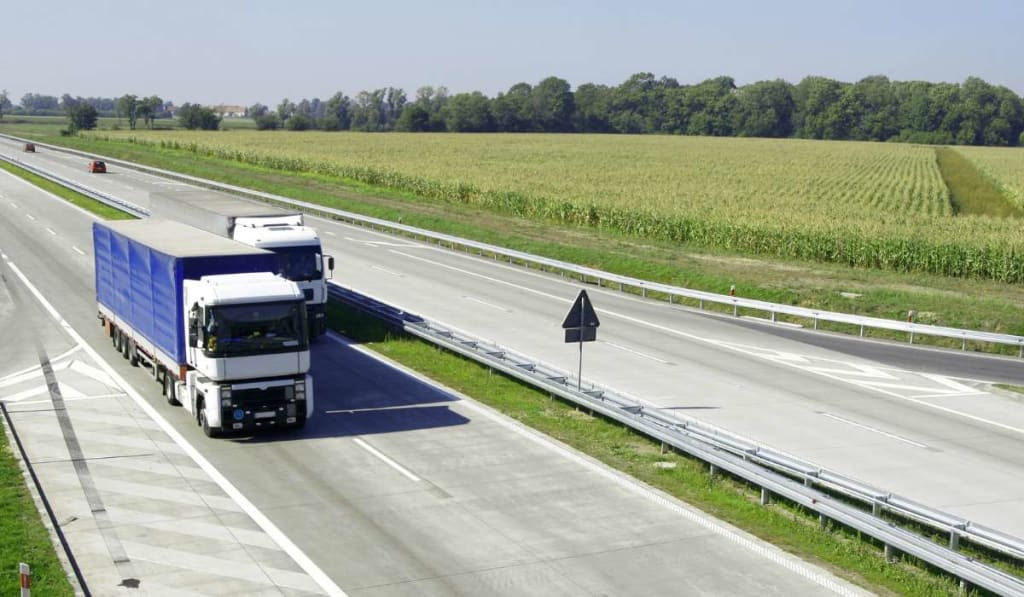Interstate And Intrastate Trucking: What's The Difference?
Understand the difference, in simple words, from our expert trucking instructors at Caledon Truck Driving School

Trucking is a vital component of the economy, moving goods from one location to another in a timely and efficient manner. However, not all trucking is created equal. There are two main types of trucking, interstate and intrastate, each with its own set of regulations and requirements.
Interstate trucking involves the transportation of goods across state lines, while intrastate trucking involves transporting goods within a single state. The differences between these two types of trucking can have a significant impact on drivers, carriers, and shippers.
5 Differences between interstate and intrastate trucking:
1. Regulations and Requirements
One of the biggest differences between interstate and intrastate trucking is the regulations and requirements that govern them. Interstate trucking is subject to federal regulations, while intrastate trucking is subject to state regulations.
The Federal Motor Carrier Safety Administration (FMCSA) is the agency responsible for regulating interstate trucking. The FMCSA sets rules and standards for everything from driver qualifications to vehicle maintenance to cargo securement. These regulations are designed to ensure the safety of both the driver and the public.
Intrastate trucking, on the other hand, is subject to regulations set by individual states. While these regulations are often similar to federal regulations, they can vary from state to state. This can create a patchwork of rules that can be confusing for drivers and carriers.
2. Driver Requirements
Another key difference between interstate and intrastate trucking is the requirements for drivers. Interstate drivers must hold a commercial driver’s licence (CDL) and meet the FMCSA’s requirements for driver qualifications. This includes passing a written knowledge test and a skills test, as well as meeting specific medical requirements.
Intrastate drivers are also required to hold a CDL, but the requirements can vary from state to state. Some states may require additional testing or certifications beyond what is required for interstate drivers.
3. Equipment Requirements
Interstate and intrastate trucking also have different requirements for equipment. Interstate trucks must comply with federal regulations for everything from weight limits to equipment specifications. This includes requirements for lighting, brakes, tires, and other safety features.
Intrastate trucks must also comply with state regulations, which can vary from state to state. However, these regulations may be less strict than federal regulations, particularly in states with lower population densities or fewer transportation routes.
4. Insurance Requirements
Insurance requirements are another key difference between interstate and intrastate trucking. Interstate carriers are required to carry a minimum level of liability insurance, as well as cargo insurance and other types of coverage.
Intrastate carriers are also required to carry liability insurance, but the requirements can vary from state to state. Some states may require more or less coverage than the minimum required for interstate carriers.
5. Costs and Fees
Finally, there are differences in the costs and fees associated with interstate and intrastate trucking. Interstate carriers are subject to federal fees, such as the Heavy Vehicle Use Tax (HVUT), as well as state fees for permits and other requirements.
Intrastate carriers are also subject to fees, but these can vary from state to state. Some states may require more permits or inspections than others, which can drive up the costs of intrastate trucking.
Which Type of Trucking is Right for You?
So, which type of trucking is right for you? That depends on a variety of factors, including your business needs, the types of goods you transport, and the routes you travel.
Interstate trucking can be more complex and expensive, but it allows for greater flexibility in terms of the routes and destinations you can serve. It can also provide access to a wider range of customers and markets.
Intrastate trucking can be simpler and more straightforward, but it may be limited by state regulations and requirements. Understanding the differences between interstate and intrastate trucking is crucial for anyone involved in the transportation industry. Both types of trucking have their unique characteristics, and the decision to use one over the other depends on various factors such as the distance of travel, type of cargo being transported, and the regulatory environment in which the company operates. It is important to work with a reputable trucking company that understands the differences between interstate and intrastate trucking and can help you make the best decision for your specific transportation needs.






Comments
There are no comments for this story
Be the first to respond and start the conversation.